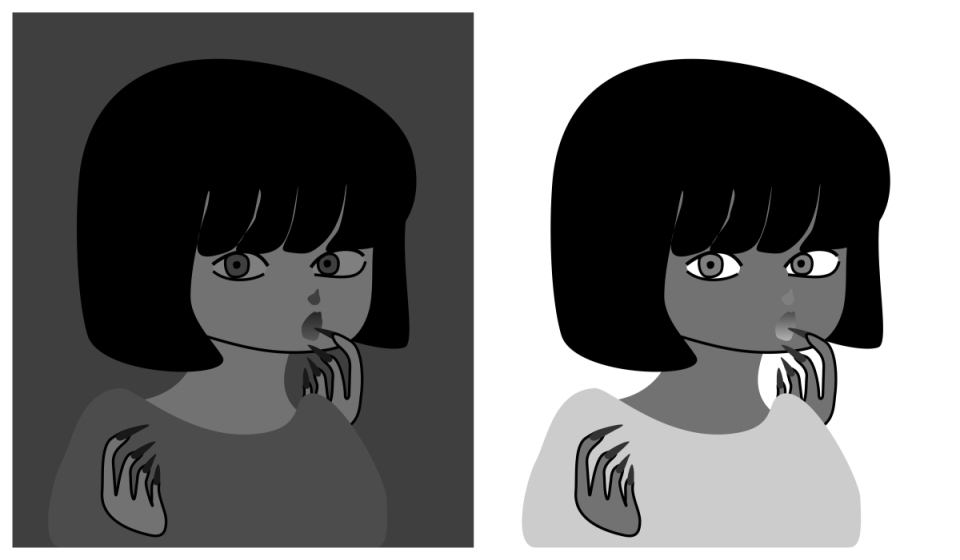Perceptual Constancies: Size Constancy, Brightness Constancy, and Shape Constancy
Perceptual Constancies: Size Constancy, Brightness Constancy, and Shape Constancy
What is perceptual constancy?
Perceptual constancy is a top-down process allowing individuals to recognize an object as unchanging in size, brightness, and shape even though there are changing stimuli, such as angle, distance, and illumination.
Shape Constancy
Shape constancy allows for us to recognize the shape of familiar objects despite images that show otherwise. An example of this is looking at a circular clock at different angles. In this example as you stand 90° to the wall that is holding the clock, you notice that the clock is the shape of a circle. As you move to the left, however, the shape of the clock becomes more of an ellipse. The same shape then appears if you move to the right of 90°. Despite the change in shape of the clock that we see when we look at it at different angles, we are still able recognize that the clock is unchanging in shape due to shape constancy.
 |
Here is the example where the clock's shape differs as you change direction but it still is circular when looked upon at 90°. |
Size Constancy
Due to size constancy, we can recognize that an object's size remains constant even if the distance between us and the object varies. Distance plays a role in how we perceive size by giving us clues as to how large an object actually is. An example of size constancy can be seen while bowling. When bowling we know how large the bowling ball is when we go to pick it up. After sending the bowling ball down to the pins, however, we see that the bowling ball's size seems to shrink. There is a size-distance relationship that we experience. The distance from our bodies to the ball allow us to recognize that the ball is truly not shrinking in size but rather its distance is increasing from our bodies making it seem that the ball is decreasing in size. Illusions can distort the distance from our perspective thereby creating an image where we visualize an object that has an unrealistic size compared to its actual size.
Lightness Constancy
 Light constancy is also known as brightness constancy and allows us to perceive an object with a constant lightness despite illumination nuances. Relative luminance is the amount of light an object reflects relative to its surroundings. By using relative luminance we are able to perceive the lightness of an object. In the picture to the left, we visualize the girls' skin color and eye color to be different from each other. The background, due to relative luminance, affects how we perceive the colors of the girls' skin and eyes. The darker background reflects less than the white background making the girl in the black background to appear to have a lighter skin color that the girl in the white background. The eye color is then affected by the color of the skin that we perceive. Since we see a lighter skin color of the girl in the black background, meaning her skin color reflects more light than the darker skin color, we visualize darker eyes on her compared to the girl with "darker" skin in the white background, when in reality, the two girls are identical in every way except for which background is presented behind them.
Light constancy is also known as brightness constancy and allows us to perceive an object with a constant lightness despite illumination nuances. Relative luminance is the amount of light an object reflects relative to its surroundings. By using relative luminance we are able to perceive the lightness of an object. In the picture to the left, we visualize the girls' skin color and eye color to be different from each other. The background, due to relative luminance, affects how we perceive the colors of the girls' skin and eyes. The darker background reflects less than the white background making the girl in the black background to appear to have a lighter skin color that the girl in the white background. The eye color is then affected by the color of the skin that we perceive. Since we see a lighter skin color of the girl in the black background, meaning her skin color reflects more light than the darker skin color, we visualize darker eyes on her compared to the girl with "darker" skin in the white background, when in reality, the two girls are identical in every way except for which background is presented behind them.






